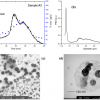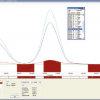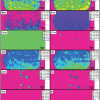Matthew Cassap
ICP Applications Specialist, Thermo Scientific, Cambridge, UK
Analysis of used lubrication oil for metals is commonplace in many industries. The metals analysed fall into three categories: wear metals, contaminants and additive elements. The concentration of these metals and elements can then be interpreted to schedule maintenance of engines and machinery such as construction machinery and aeroplanes.
The cost of unscheduled maintenance can be high, not only in materials and parts, but also in lost profits due to down time. Once the oil has been sampled, Inductively Coupled Plasma Optical Emission Spectroscopy (ICP-OES) analysis is a very useful tool for this application. The high temperature source allows for full dissociation of organo-metallic compounds and also has the ability to handle the complex organic matrix. This allows for the oil to be directly aspirated into the ICP after a simple dilution, negating the need for any time consuming sample preparation technique and enabling a fast turnaround time.
An emerging area for this type of analysis is in the motor sport industry, particularly for endurance races such as the Le Mans 24 Hour and the 24 Hour Motorcycle Endurance Championship. The results of samples taken during a pit stop can be used to predict which components of the engine will need to be replaced and when. This allows the competitive teams to reduce the number of stops and therefore spend more time on the track improving the racing time; it also has the added benefit of predicting the premature failure of engine components.
A method that is commonly used by many commercial and contract laboratories is ASTM D5185, which is suitable for the analysis of additive elements, wear metals and contaminants in used lubricating oils and selected elements in re-refined and virgin base oils. A total of 22 elements can be determined by this method and it is generally used as a rapid screening method to monitor the equipment condition and define when corrective action is needed. However, the metallic analytes must be oil soluble for accurate quantification. The quantification of insoluble particles such as small particles of metal dislodged from a mechanical part (greater than a few micrometres in size) is not possible when using this methodology and an additional digestion step would be required to enable quantitative analytical measurements.
The main factor that influences the use of ICP as an analytical tool during a motor sport event is the availability of an instrument at the racetrack location. Recent advances in ICP instrumentation such as significant reduction in size, and enhanced stability and robustness have meant that mobile laboratories equipped with ICPs are now able to support such events and offer the powerful capability for analysis of lubrication oils for predicative maintenance.










